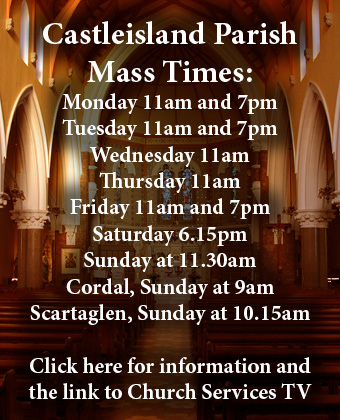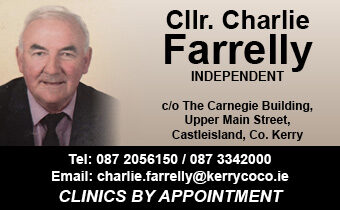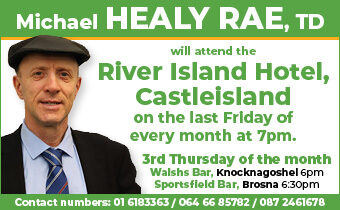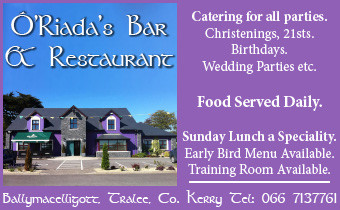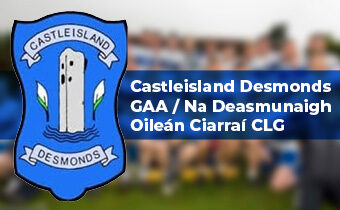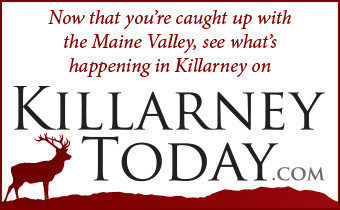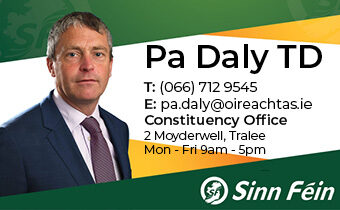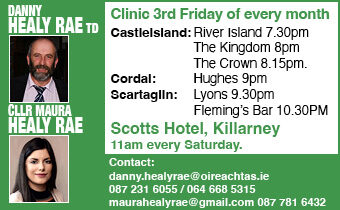“It is an amazing turn of events that Dermot McCarthy would find my grandfather’s medal in a house in Castleisland and that my family would get it back especially in the week in which the 100th anniversary of the World War 1 is being marked.”
That was Tralee native, Robert Tangney’s reaction on Sunday evening as he was presented with the lost medal by Dermot McCarthy. It was a reaction tinged with incredulity as the medal went missing in England almost a century ago.
Mr. McCarthy made the discovery of the WW1 medal and an Irish War of Independence medal during renovation work on a cottage in Dysart on the Camp Road just outside Castleisland in 2000.
After his discovery of the medals, Dermot McCarthy exhausted every avenue of enquiry open to him in the Castleisland area. It was fair to assume that a medal found in a house in Castleisland would belong to a man from the area. Not so. However, how it got here is beginning to look like one of the great mysteries of life – and one that probably won’t be solved now.
The WW1 medal is known as The Victory Medal. Circular and gold-coloured, it came with a rainbow coloured ribbon. It shows an angel on the front and the back is stamped ‘The Great War For Civilisation 1914 – 1919′.
I ran the story in The Maine Valley Post and in The Kerryman a couple of weeks ago and the identity of Private D. Tangney 4026 Munster Fusiliers was revealed.
“This find is also very special to my family as I had just completed the writing and publishing of a book on the history of Ballymullen Barracks which is where my Grandfather signed up to the British Army. We have been so engrossed in the research/history of the barracks and all that it meant to Tralee town and this seems like the final piece of the jigsaw,” said a delighted Robert.
Later on, Robert sent me a piece on his grand-father, the soldier, Denis Tangney who earned the medal the hard way.
“My Grandfather, Denis Edward Tangney, was born in Tralee on Friday the 29th of April 1892 and lived just a stones throw away from the barracks at Ballymullen. He was a painter by trade and volunteered to fight with the British Army during World War I.
Denis joined the 8th Battalion Royal Munster Fusiliers, signing up at Ballymullen Barracks. The 8th Battalion trained at a variety of camps such as Fermoy, Mitchelstown and Templemore before moving to Aldershot in England in August 1915. By the 8th of December, 1915 the 8th Battalion was ready for war. They boarded military trains travelling to Southampton and then sailed on board the “Empress Queen” landing at Le Harve on the 18th of December, 1915.
The 8th Battalion saw action at Bethune, Northern France and the Loos Sector during June-July 1916. They also fought in the Somme and Ypres. My Grandfather was badly injured on Monday the 6th of November 1916 when he sustained shrapnel wounds. His war ended here and he was transferred to York Military Hospital in England. He was later transferred to a hospital in Blackrock, Dublin where he met his future wife, Maria Leslie. Denis spent a total of three years recuperating in hospital before finally returning to Tralee.
Denis continued with his trade as a painter but had a “straight-leg” all of his life. He married Maria Leslie and they lived in various places in Tralee such as Ballymullen and Castlemorris Lane. They had three children: Robbie, Maureen and Denis (my father who passed away in 2009).
In 1927, fourteen houses were built at Haigs Terrace for Ex-British Soldiers and my grandfather was allocated No.1 Haigs Terrace in 1948. The family have lived there since.
Denis was a great lover of birds and he kept pigeons and hens at Haigs Terrace until his death on the 17th of December, 1978.
I would like to also acknowledge Dermot McCarthy for his generosity and persistence in trying to find the owner of the medal. Without Dermot’s good will we would not have received our grandfather’s medal back home again.”






